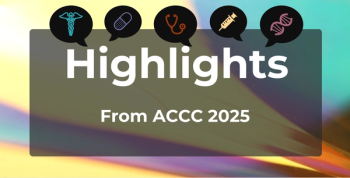
Disruptive Technologies Will Transform Healthcare Delivery
Tuesday morning at AHIP's Fall Forum 2012 included a session on the methods in which evolving technologies and disruptive innovations will undoubtedly lead to better and more cost-efficient patient care.
Tuesday morning at AHIP’s Fall Forum 2012 included a presentation by Molly Joel Coye, MD, MPH, chief innovation officer, Institute for Innovation in Health, UCLA Health System, and Eric Topol, MD, Gary and Mary West Endowed Chair of Innovative Medicine, Scripps Translational Science Institute. The session featured both an overview of evolving technologies that are currently being implemented into healthcare, as well as technologies on the horizon that are poised to transform the way healthcare is delivered.
Dr Coye took the podium first, and she began her presentation by referring to economist Joseph Schumpter’s explanation of the difference between invention and innovation. According to Schumpter, invention is the process of taking cash and turning it into an idea, whereas innovation is the process of taking an idea and turning it into cash. Further, the widespread adoption of invention is innovation, and this is achieved when there is change in an ecosystem. The point Dr Coye was making was that there has been constant invention in the healthcare system over the past few decades; however, innovation has been scarce.
Dr Coye also mentioned that we utilize technologies or forms of technologies today that were also existent years ago, such as in-home monitoring devices. However, the lack of payer support and proper instruction for how to use the technologies prevented the widespread adoption necessary to enact change. Luckily, the technological revolution that has taken place over the past decade has led to our society becoming not only more technology friendly, but technologically savvy.
Since many healthcare organizations are now investing in technologies and looking for ways to deliver care while reducing costs, the uptake and adoption of technology is increasing every day. Dr Coye showed some examples of this, referring to advancing tele-care programs that are being implemented from the ICU to in-home health consultations with social workers; imaging programs that allow providers to send images to the cloud for review (thus cutting back on unnecessary trips to the doctor’s office for patients and avoiding any problems when patients come without necessary materials); and electronic referral programs that allow providers to initiate an electronic consult, upload photos and labs for specialists, and determine whether a patient appointment is necessary (some of these programs have reduced referrals up to 40%).
Dr Coye finished her presentaion by saying that “apps are great, but they are not the only technology that can help to transform healthcare.”
Following Dr Coye’s presentaion was Dr Topol, who displayed a multitude of mobile appolications that exist today and are helping providers provide faster care in a more efficient way. “Healthcare is about to become Watson-ized,” said Dr Topol, referring to the supercomputer created by IBM that was made popular on Jeopardy! in years past. “Patients and providers will soon be able to access a supercomputer that is capable of processing millions of pages of content in seconds, all in the cloud.” He spoke about the need for a fundamental shift in healthcare where population medicine, which currently represents $13 trillion in spending per year, to individual medicine, which is much more precise and effective.
Dr Topol spoke about a number of new mobile fitness applications that have recently become more popular, such as Nike’s Fuel Band and Fitbit devices that monitor and encourage physical activity while also syncing a person’s data to the Web and mobile devices, such as smartphones and tablets. These devices are important, said Dr Topol, because they are the precursor to social networking and gaming opportunities where consumers can interact with friends and family and compete to improve their health.
The most impressive part of Dr Topol’s presentation was when he demonstrated a number of apps that were available on his smarthphone that interacted with devices he was wearing. “The stethoscope, a device that has been around for 200 years and has been an iconic part of medicine, is about to become obsolete,” said Dr Topol. Following his statement he connected an attachement to his smartphone, put some gel on the tip of the device, and placed it on his chest, which showed the audience on the screen his life heartbeat. “Why would we listen to something when we can see it?” he said. Next, he took another attachment and placed his thumbs on it and showed the audience a live cardiogram. Between the “oohs” and "ahhhs” in the crowd, Dr Topol explained that there are many other similar attachments and applications, such as glucose monitoring programs for diabetic patients. “The average person looks at their phone 150 times per day,” said Dr Topol. “When a patient sees their measurements right on the screen it can help them decide whether to eat that muffin.”
Dr Topol ended his presentation by saying that we do not have sensors in our bodies like our cars do that tell us when something needs to be changed or fixed. However, there are applications on the horizon that will interact with sensors that we will be able to put on our bodies to predict and determine diabetic complications and even heart attacks. We are truly living in the age of a digital revolution; if the healthcare industry learns how to truly implement these technologies into healthcare delivery and understand how to reap the potential cost savings, personalized medicine may be attainable for patients sooner than was ever thought possible.
Newsletter
Stay ahead of policy, cost, and value—subscribe to AJMC for expert insights at the intersection of clinical care and health economics.









































